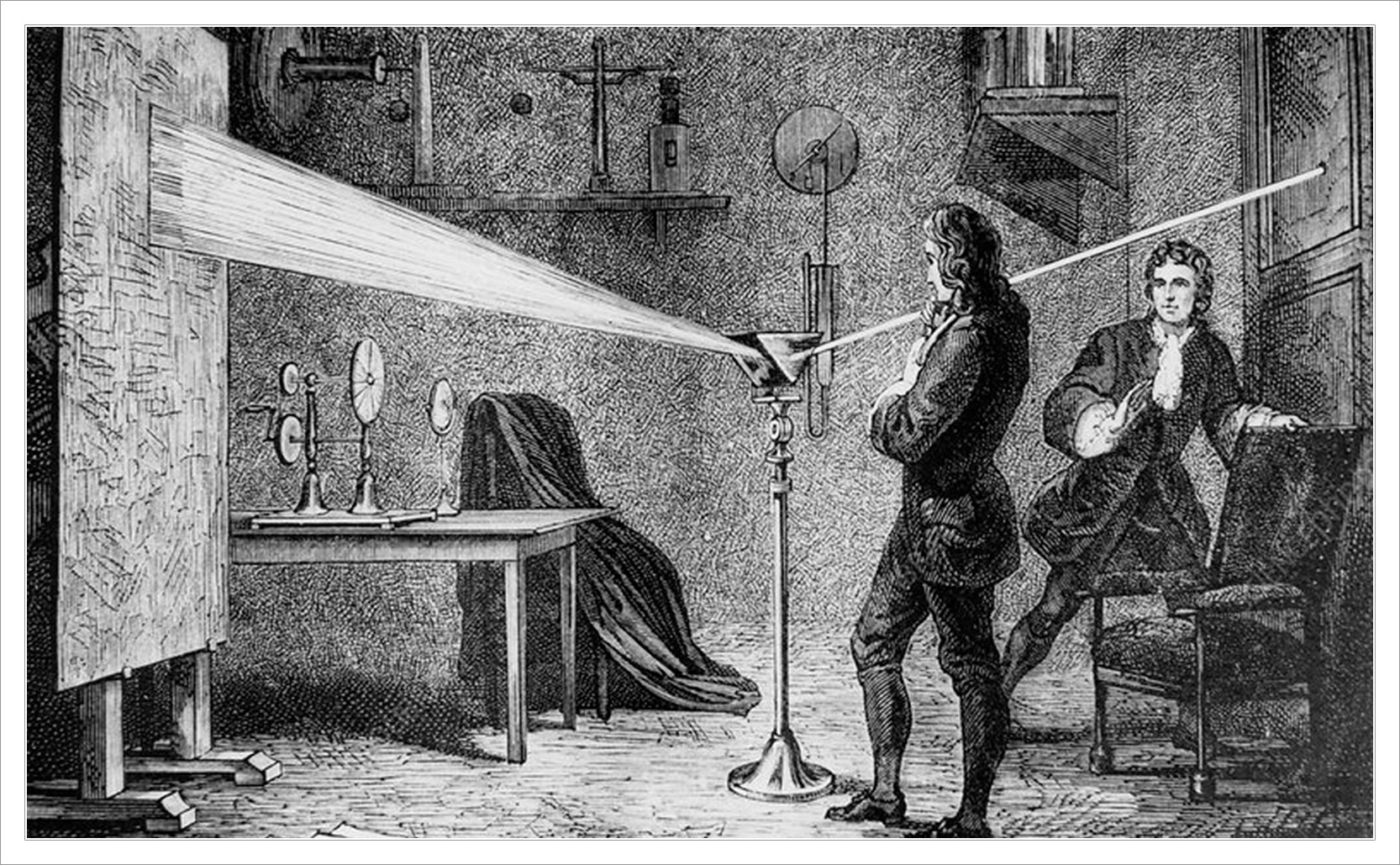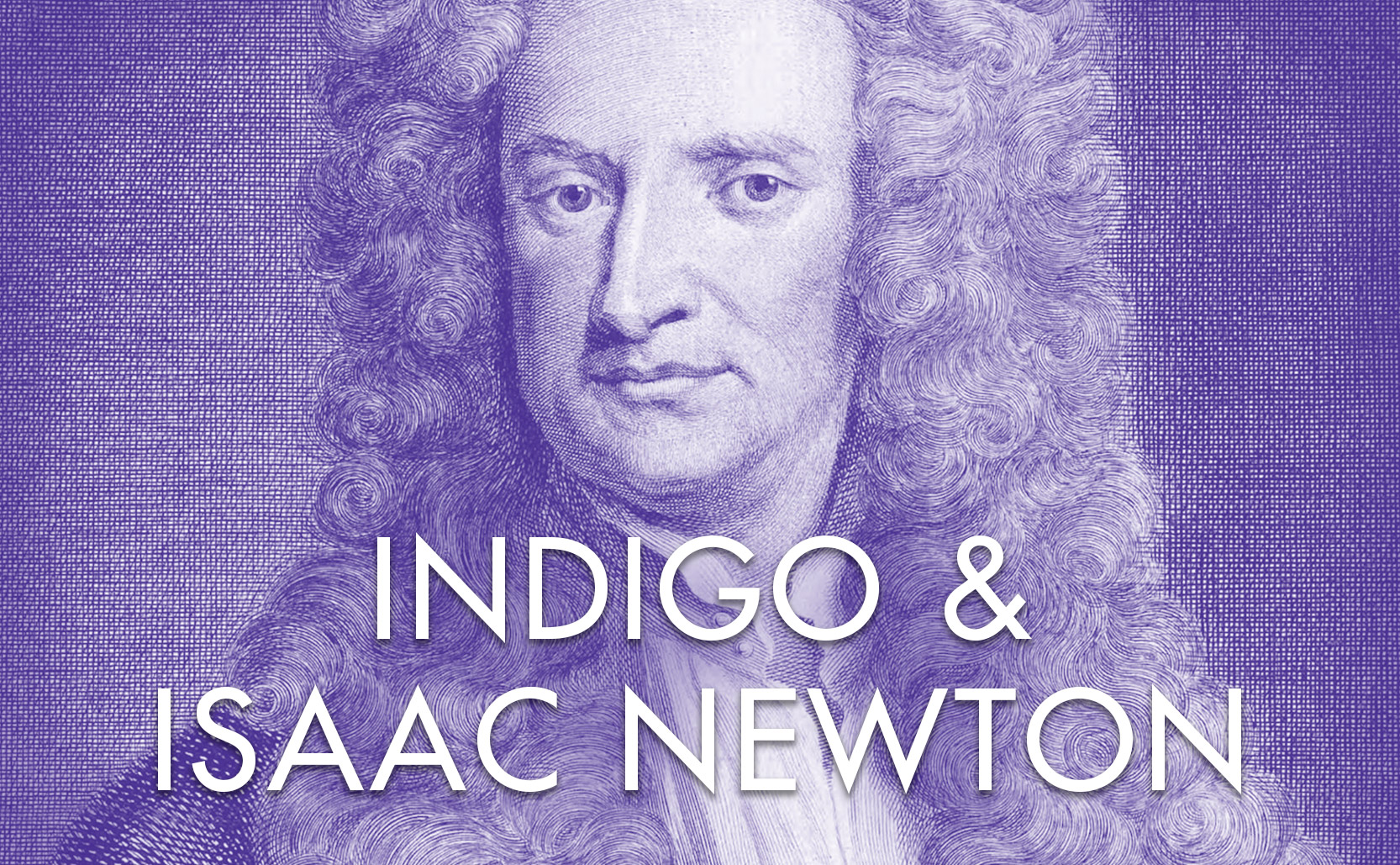Indigo & Isaac Newton
Indigo was included in the color spectrum by Isaac Newton because he wanted the spectrum to have seven colors instead of six.
Isaac Newton’s pioneering experiments with light & prisms explained how white light is actually the combination of several wavelengths (colors) of light. He demonstrated this using a prism to break apart white light into its composite colors and then used a second prism to recombine those colors back into white light. When white light is broken apart the “spectrum” (a word Newton introduced to the field of optics meaning a “continuum of color”) has many colors. Exactly how many colors is open to cultural interpretation.

Any Color You Like
Most human eyes are essentially the same which means that most of us are physically capable of seeing & differentiating all of the same colors. Where we differ is how we think about color. Your culture & language influences how you categorize colors.
The importance of, and names for, different colors varies from culture to culture. For example, the medieval English didn’t have a name for the color orange until the 16th century, so before then things that were orange were just called red (like “redheads” and the robin “redbreast”). It’s not that they couldn’t see orange, they just didn’t have a name for it because having two distinct names for red and orange wasn’t important until then. Russian, Greek, Turkish, and Hebrew all have two different words for idea of blue: one for darker blue and the other for lighter blue.
Hungarian has two different words for red depending on what you’re describing. “Piros” is used for red inanimate objects or red cheerful things, while “vörös” is used for red animate things or red serious things. Irish Gaelic has two words for the idea of green depending on where it’s seen. “Glas” is used for the green of plants while “uaithne” is used for the green of artificial dyes. The hue of a plant and a sweater could be exactly the same, but in Irish Gaelic different words will be used for the idea of green. In a nutshell: the names, categorization, and importance of various colors is entirely influenced by which culture we are a part of.
This cultural influence also applies to the spectrum of color and rainbows. Illustrations of rainbows contain discreet, countable, bands of colors. In nature however they’re continuous gradations of wavelengths/colors. Assigning a fixed number of colors to a rainbow depends on your cultural interpretation. In Islam, rainbows traditionally only have 4 colors corresponding to the four elements of water, earth, fire and air. Western culture should probably only have six colors, but we have seven because of Isaac Newton’s interest in mysticism.

The Sacred Seven
As scientifically minded as Newton was, he also held occult/mystical beliefs. He believed in sacred geometry and the ideas of Pythagoras that there was an importance to the number seven. At first, after refracting white light, Newton recorded observing five colors (red, yellow, green, blue, violet). Then he recorded seeing six (he added orange). But to Newton six wasn’t as satisfying as seven. There are seven notes in the western major scale, seven days in a week, seven known “planets” in the sky (in Newton’s time), but only six colors in the spectrum of light? This wouldn’t do, so he added indigo.
The first six colors he observed are a logical western division of the spectrum:
• three primary colors (red, yellow, blue)
• three secondary colors (orange, green, violet)
Indigo is a blend of blue + violet and as such is the only tertiary color he included. It’s not that indigo isn’t part of the spectrum (it’s definitely there), but rather the problem is that it’s the only tertiary color listed because Newton shoehorned it in. Why indigo? Why not vermillion or cerulean? Indigo’s inclusion was an arbitrary choice driven by Newton’s desire to have seven colors instead of six so he picked one tertiary color but ignored the five others. Cultural influences pushed him to find seven colors instead of six (or eight, or twelve, or any other number). Centuries later we still divide the spectrum into seven colors because of Newton.


